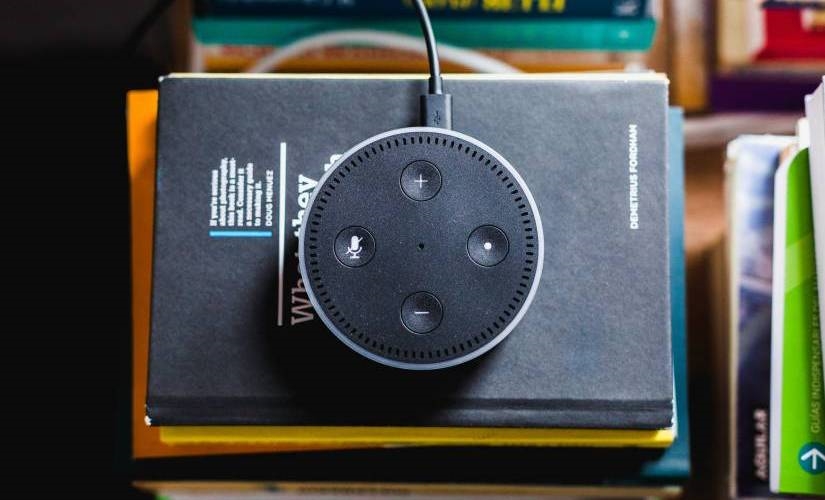Voice Will Penetrate CRM in the Coming Years
Voice Will Penetrate CRM in the Coming Years

In the past few years, voice has become a core part of the consumer journey. It’s a utility that a growing number of people have come to count on throughout the course of their days. Voice-enabled assistants like Alexa (Amazon), Cortana (Microsoft) and Siri (Apple) perform tasks as varied as adding dates to calendars, turning on lights, setting reminders, playing music, and performing online searches.
To be sure, voice is transforming the way we experience the internet.
As a result, organizations have begun connecting their voice-communications systems to their customer-relationship strategies. They’ve realized that when it comes to resolving an issue or building a relationship, there’s nothing like the power of voice to help drive digital customer engagement.
Advances in voice that will shape CX.
In 2018, voice-enabled device sales reached 1 billion, meaning voice technology is already shaping consumer experiences, regardless of whether the consumers themselves realize it. For example, artificial intelligence-powered voice technology is fast becoming indispensable, with 71% of smart speaker owners using them daily. Nearly half of users perform product research using voice, with 43% using them for creating shopping lists.
In time, this technology will become even smarter, as chatbots and virtual assistants become a more familiar part of the customer experience — even to the point of being able to understand the tone and cadence of one’s voice.
With the rise of voice marketing, improved audio marketing will allow businesses to communicate with their audiences without having to actually visualize anything.
These voice ads are highly contextual, creating “micro-moments” in which consumers can, say, order pizza for the big game or find a last-minute wedding shower gift.
How voice impacts consumer interaction
Today, in 2019, research shows that more than 40% of smart-speaker owners use them to search for products, further proving that voice technology is no longer a niche product. How does this affect a brand’s marketing? Well, the basics of ad copy have always been the same: Keep the message simple, direct, and short.
Why? We can’t count on consumers — who want information fast — to read reams and reams of copy.
The rise of voice will only reinforce this, making consumers even more reluctant to read long articles, how-to guides, or reviews. A brand that doesn’t provide consumers with the succinct information they want (via voice and audio) will quickly fall behind its competitors that do.
Your content marketing strategy should guide you in deciding how to leverage voice response and how deeply to invest in it. To find out, ask yourself:
- Who is your target audience? Is it composed of cutting-edge early adopters? Smart-home enthusiasts? What else about them may make them likelier to engage with your brand using voice versus other platforms?
- Do you know how to ensure your content experience is valuable and relevant to these demographics?
- Do you know what results to expect?
- How will you determine how well you have succeeded?
So is your brand voice-friendly? Below is a handful of ways to approach voice so that your brand is ready for the future:
1. Have an active SEO voice strategy. Your website needs to hone its SEO efforts in the context of how people actually speak when they seek out information. People search differently when they pose their questions vocally.
Voice queries are usually slightly longer than text searches and posed in the form of full questions, such as “where can I buy an umbrella nearby?” As such, it’s wise to incorporate some longer and more relevant keyword phrases.
Because consumers are taken to the first result rather than to a results page, you should aim to be the top hit for each of your search terms, rather than just on the top page. This is starkly different from the traditional SEO strategy, in which you aim to be on the first page. With voice, you aren’t being heard if you aren’t number one.
2. Consider your content. With the rise of voice comes the rise of audio, so it’s important that brands package up content for audio purposes — whether it’s website copy, newsletters, or anything else — and make it an integral part of your content management strategy.
Create a Google action or Alexa skill, which allow voice assistants to react to user queries. For example, Nestlé created a skill called GoodNes that lets consumers, instead of reading a recipe, get cooking instructions provided to them via audio in addition to a visual guide.
3. Focus on customer experience. Because Alexa and Google Assistant can differentiate between voices, they can provide insights about each user, ultimately giving you the chance to provide them with more personalized messages and content. Capital One, for example, has included a feature that allows consumers to pay their balances and track their spending using Alexa.
The future of online commerce is here, and it has a voice.
Brands that listen and work to incorporate audio elements into their marketing efforts will position themselves well for whatever developments come next. What say you?
The post Voice Will Penetrate CRM in the Coming Years appeared first on ReadWrite.
(31)


